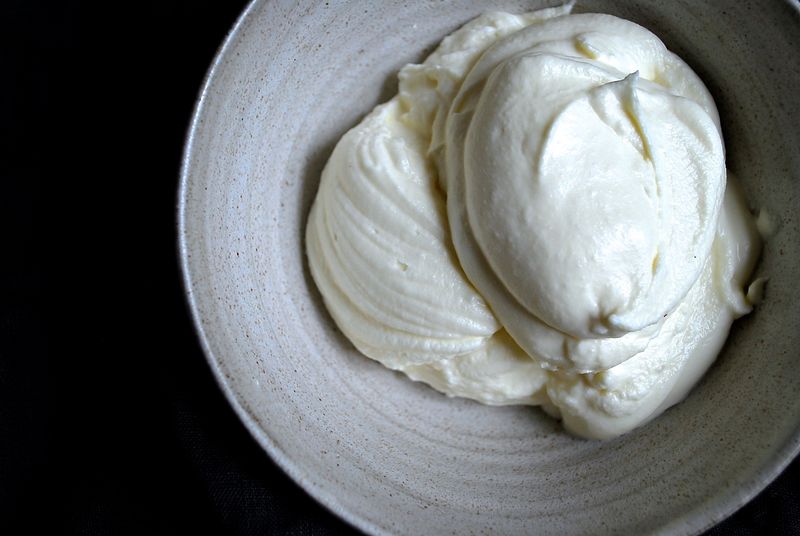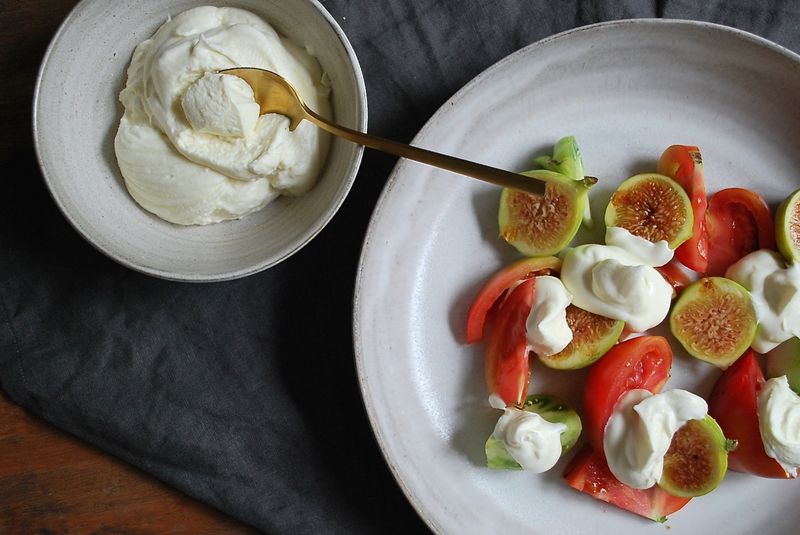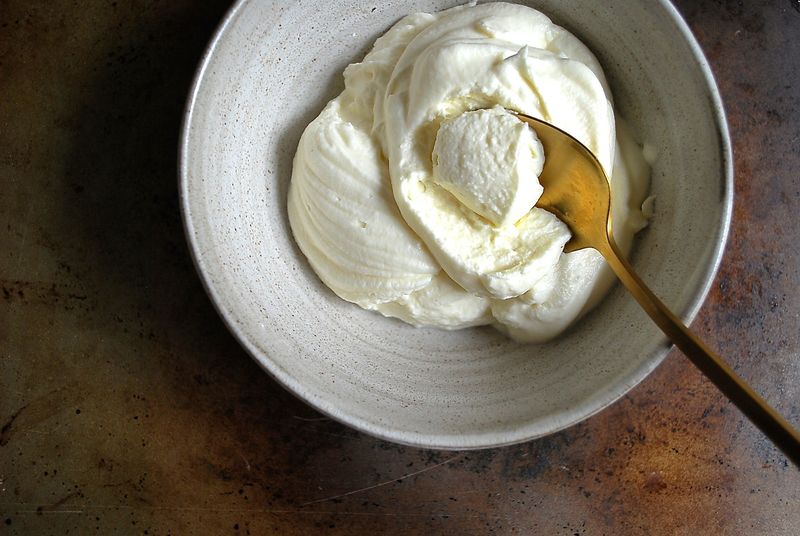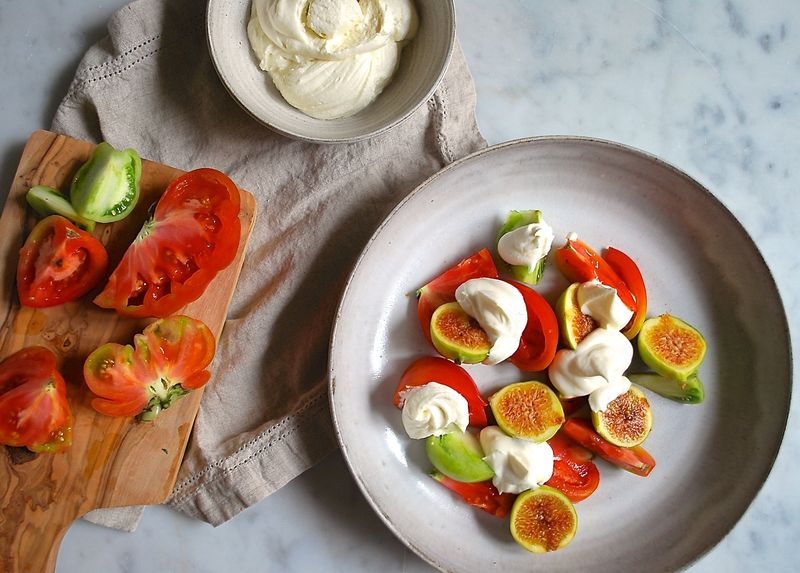When it's strange to serve a bowl of sour cream at a dinner party, serve savory mousse instead.

If you should find yourself in northern California anytime soon, get yourself to Calistoga. Because in the midst of this sleepy, dusty wine town—which feels a little it's out of a scene from an old Western movie—you’ll find a gem of a restaurant: Solbar.
The restaurant is gorgeous, in an airy, laid-back California way, and the outdoor space is lined with palm trees, with tiny globe lights strung up above the wide courtyard.

Order anything on the menu, and you’ll be pleased. (I was.) But if you see mention of a Parmesan mousse anywhere, stop what you’re doing and ask for it.
The menu changes seasonally; on my August visit, I had Parmesan mousse spooned on top of a composed salad of grilled peaches, roasted onions, wedges of tomato, and thin slices of prosciutto.

The dollops of mousse looked a bit like yogurt. When I took a bite, I tasted only rich dairy, as if I'd gotten a mouthful of pure cream. But then suddenly, all I tasted was salty Parmesan.
It’s a neatly done trick, and I don’t use that word loosely. My dinner companions and I looked at each other, bewildered: “Is it magic?” one of us wondered, half-joking. The texture of the mousse was ethereally light, which helped to suspend the cheese throughout the cream, providing the brief illusion of one flavor—and then the brilliant reveal of another.

But you don't have to go to California to experience this magic. Nicely enough, the chef, Brandon Sharp, was willing to part with the recipe. It's short and to the point: white wine, rosemary, Spanish onions, cream, and Parmesan. Cook it all, strain it, cool it, and whip it into airy peaks.
And despite the elegance of the final result, the recipe is surprisingly straightforward: You’re essentially making an infused whipped cream with the addition of cheese, which thickens the cream to create the mousse-like texture. While not an everyday recipe, it’s easy (and impressive) enough to keep in your back pocket for a dinner party.
Pair it with anything on which you’d put sour cream or crème fraîche or even a shaving of Parmesan. Use it to dress up a simple salad of roasted vegetables (beets and sweet potatoes would be very good), dollop it on top of lentils, or spoon it over slices of prosciutto and fresh figs. Swirl it on crostini or serve it with crunchy breadsticks and let dinner guests dip in.

The restaurant version is a little fussier than I’d like, but I don’t begrudge them that. Solbar is a Michelin-starred restaurant, so they aim for absolute perfection in every detail. Fair enough, and lesson learned: Good thing I am not running a Michelin-starred restaurant from my kitchen! I care less about perfect plates and more about licking the spoon.
The original recipe instructs you to strain your simmered cream over a chinois without pressing on the solids. Speaking from experience, I can tell you this will take much more patience that you in fact possess. I tested the recipe as written, and then tried applying a bit of practicality. Instead of straining the cream over a chinois, I used a larger mesh strainer. This strains out the pieces of onion and rosemary, leaving you with a silky smooth cream. With barely a discernable difference between the two techniques, I am content taking the shortcut (and you can be, too).
When I served it over the last heirloom tomatoes I could find and a few sliced figs, it made an exceptional meal.

Parmesan Mousse
Adapted from Brandon Sharp, Solbar
1 quart heavy cream
9 ounces Parmesan cheese, freshly grated
1 Spanish onion, minced
8 ounces white wine
2 sprigs rosemary
Salt, to taste
See the full recipe (and save and print it) here.
Top 2 photos courtesy of Solage Calistoga; all other photos by Posie Harwood







See what other Food52 readers are saying.